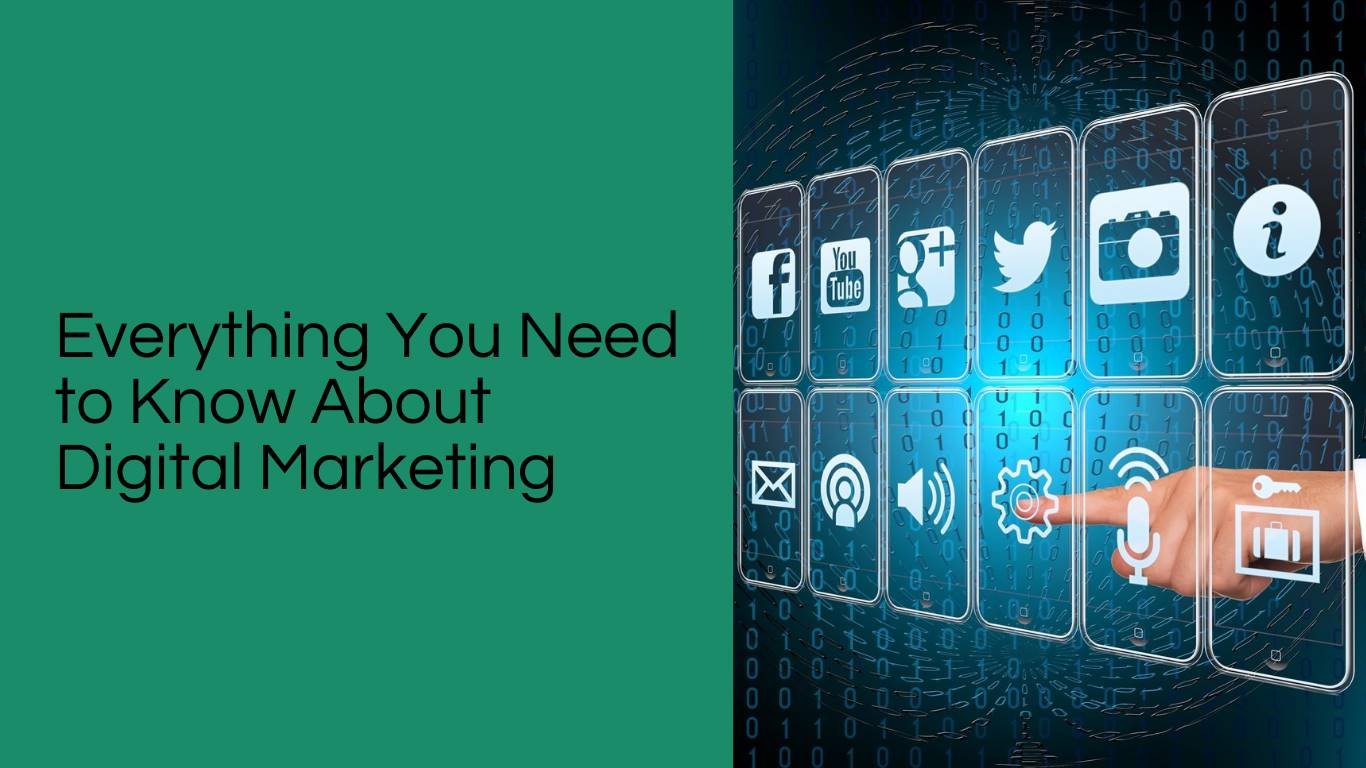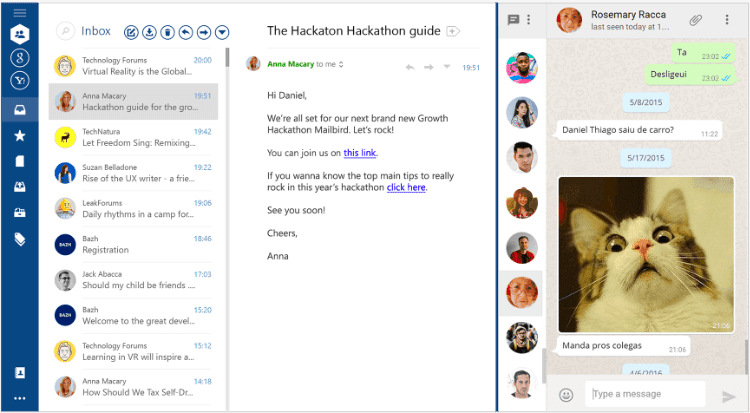The most cost-effective way to grow a business is digital marketing.
This type of marketing is far more affordable than traditional marketing.
It’s the fastest way to communicate with your customers.
This is the most targeted type of advertising available.
It’s a great way to build your brand and build trust.
Moreover, it is the most scalable and measurable marketing method available.
1. Digital Marketing
The use of the internet and other forms of digital communication to connect brands with potential customers is known as digital marketing, also known as online marketing. As marketing communications channels, email, social media, and web-based advertising are included, as well as text and multimedia messaging.
The basic definition of digital marketing is any marketing campaign that involves digital communication.
2. Importance of Digital Marketing
You can reach a larger audience through digital marketing and target prospects who are most likely to buy your products or services. Aside from that, it is often less expensive than traditional advertising, and you can measure success on a daily basis and pivot accordingly.
Digital marketing has a few major benefits. Here are four of them.
- You can only target prospects with the highest likelihood of purchasing your product or service.
- It is more affordable than traditional marketing methods.
- By using digital marketing, you can outrank larger players in your field.
- Marketing with digital technology is measurable.
3. Role of Digital Marketing for a Company
Traditional marketing might be done through print ads, telephone communications, or physical marketing, but digital marketing is done electronically and online. Brands can now reach their customers via email, video, social media, and search engines, thereby increasing their marketing opportunities.
4. Different Types of Digital Marketing
1. Search Engine Optimization (SEO)
Search engine optimization involves optimizing a website in order to appear higher on search engine results pages, thereby increasing the amount of organic (or free) traffic it receives. Websites, blogs, and infographics are some of the channels that benefit from SEO. You can see more details on the ins and outs of SEO in this cheat sheet.
In order to drive qualified traffic to your website, SEO can be approached in a number of ways. Among them are:
- On page SEO: On page SEO is a type of SEO that is concerned with the content that is available “on the page” of a website. Using keyword research to determine the search volume and intent (or meaning) of keywords, you can answer readers’ questions and rank higher on search engine results pages (SERPs) that these questions produce.
- Off page SEO: Off page SEO focuses on all the actions taken “off the page” when optimizing a website. You might ask, “What activities off of my own site affect my ranking?”. The answer is backlinks, also known as inbound links. You rank highly for the keywords you care about based on how many publishers link to you, as well as the relative “authority” of those publishers. You can earn backlinks to your website by connecting with other publishers, writing guest posts for their websites (and linking back to your website), and generating external attention.
- Technical SEO: Technical SEO is concerned with the backend of your website and how the pages are coded. Compression of images, structured data, and CSS file optimization are all forms of technical SEO that can increase your site’s loading speed – an important ranking factor in the minds of search engines like Google.
2. Content Marketing
Content marketing is the process of creating and promoting content assets for the purpose of generating customer awareness, traffic growth, and lead generation. You can implement your content marketing strategy using the following channels:
- Blog posts: By publishing articles on your company’s blog, you can demonstrate your industry expertise and generate organic search traffic. Ultimately, this allows you to convert more website visitors into leads for your sales team.
- Ebooks and whitepapers: These forms of long-form content like ebooks and whitepapers help visitors to your website become more knowledgeable. By exchanging content for a reader’s contact information, you can generate leads for your company and move them through the buyer’s journey.
- Infographics: Sometimes readers prefer you to show rather than tell. Infographics are visual content that helps website visitors visualize a concept you want to educate them about.
3. Social Media Marketing
Your brand and your content are promoted through social media channels to increase brand awareness, drive traffic, and generate leads for your company. Social media marketing channels include:
- Facebook.
- Twitter.
- LinkedIn.
- Instagram.
- Snapchat.
- Pinterest.
4. Pay Per Click (PPC)
PPC is a technique for increasing traffic to your website by paying a publisher each time your ad is clicked. The most popular PPC technique is Google Ads, which allows you to buy top slots on Google’s search engine results pages for a price based on how many times your links are clicked. There are several other channels where you can use PPC:
- Paid ads on Facebook: Users can pay to have a video, picture, or slideshow customized, and Facebook will publish it to the newsfeeds of people who match your business’s target audience.
- Twitter Ads campaigns: Using this service, users can place a series of posts or profile badges in the news feeds of a certain audience, aimed at accomplishing a specific business goal. You can use this goal to increase website traffic, increase Twitter followers, tweet engagement, or even get more app downloads.
- Sponsored Messages on LinkedIn: Users can pay to contact specific LinkedIn users based on their background and industry.
5. Affiliate Marketing
It is performance-based advertising, where you earn commissions for promoting the products or services of another company via your website. There are many affiliate marketing channels, including:
- Host video ads through YouTube’s Partner Program.
- Post affiliate links to your social media accounts.
6. Email Marketing
Email marketing is used by companies to communicate with their audiences. Businesses often use email to promote content, discounts, and events as well as direct potential customers to their website. Among the types of emails you might send in an email marketing campaign are:
- Subscribe to the blog newsletter.
- Send follow-up emails to website visitors who have downloaded something.
- Welcome emails to customers.
- Loyalty program members receive holiday promotions.
- For customer nurturing, send tips or a similar series of emails.
7. Sponsored Content
A sponsored content agreement is an agreement where you, as a brand, pay another company or entity to create and share content that discusses your product or service.
Influencer marketing is a popular type of sponsored content. In this type of sponsored content, a brand sponsors an influencer within its industry to share content linked to the brand on social media.
Another example of sponsored content is an article or blog post written to spotlight a topic, brand, or service.
5. Role of a Digital Marketer
Digital is responsible for driving brand awareness and lead generation through all the digital channels – free and paid – that are available to their company. A few examples of these channels are social media, the company’s website, search engine rankings, email, display advertising, and blogging.
Digital marketers usually focus on different Key Performance Indicators (KPIs) for each channel so they can properly measure performance. Digital marketers in charge of search engine optimization, for example, measure their website’s “organic traffic” – traffic that comes from users who find a page of their website via a Google search.
Many marketing roles today involve digital marketing. Many of the digital marketing tactics listed above might be handled simultaneously by one generalist at a small company. In larger companies, these tactics are handled by multiple specialists who are each responsible for handling just one or two channels.
These are some examples of these specialists:
1. SEO Manager
Primary Key Performance Indicators (KPIs): Organic traffic
SEO managers help businesses rank on Google. This person might use a variety of search engine optimization techniques to ensure that the content produced by content creators performs well on Google, even if the company also posts it on social media.
2. Content Marketing Specialist
Primary Key Performance Indicators (KPIs): Time on page, overall blog traffic, YouTube channel subscribers
Digital content creators are content marketing specialists. They regularly adhere to the blog calendar and develop a content strategy that includes video as well. They often coordinate with other departments to ensure that the business launches products and campaigns that are supported with promotional content on each digital channel.
3. Social Media Manager
Primary Key Performance Indicators (KPIs): Follows, Impressions, Shares
Social media managers manage social networks for their companies, but which ones depend on the industry. The company’s social media managers plan the company’s written and visual content posting schedule. Additionally, this employee might work with a content marketing specialist to develop a plan for what to post on which social network.
6. Digital Marketing: How to Get Started
1. Establish your goals.
The first thing you need to do when you’re starting out with digital marketing is to identify your goals, since your strategy will differ based on those goals. You might want to pay more attention to reaching new audiences via social media, as an example, if you are trying to increase brand awareness.
In addition, if you want to increase sales on a specific product, you should focus more on SEO and content optimization to attract potential buyers to your website. Furthermore, if you want to drive traffic through paid advertising, you might try PPC campaigns.
After you determine your company’s biggest goals, you can begin developing a digital marketing strategy.
2. Determine your target audience.
The biggest benefit of digital marketing is targeting specific audiences – however, you can’t make the most of that benefit without first identifying your target audience.
3. Create a budget for each of the digital channels.
It really depends on what aspects of digital marketing you’d like to include in your marketing strategy when determining your budget.
Inbound marketing techniques like SEO, social media and content creation for an existing website don’t require a lot of budgets. Inbound marketing is about creating high-quality content that your audience wants to consume, which means that unless you plan to outsource the work, the only investment is your time.
Outbound techniques such as online advertising and buying email lists are certainly expensive. It depends on the level of visibility you want to gain from the advertising.
When you use Google AdWords to implement PPC, you’ll compete against other businesses in your industry to appear at the top of Google’s search results for keywords related to your business. The cost of this can vary depending on the competitiveness of the keyword, which is why you should also focus on building your organic reach.
4. Find the right balance between paid and free digital approaches.
For a digital marketing strategy to be truly effective, it will need both paid and free elements.
If you spend time creating buyer personas to understand the needs of your audience and create quality content that attracts and converts them, you’re likely to see great results within the first six months despite spending little money on advertising.
The results may come even faster if you include paid advertising in your digital strategy.
For long-term success, it’s recommended to focus on building your organic (or “free”) reach through content, SEO, and social media.
Test both free and paid channels and iterate on your process as you determine which is most effective for your brand.
5. Produce engaging content.
As soon as you have an audience and a budget, you can begin creating content for the different channels you’ll be using. There are various types of content you can use, including social media posts, blog posts, PPC ads, sponsored content, email marketing newsletters, and more.
You must make sure that the content you create is engaging and interesting to your audience since the point of marketing content is to increase brand awareness and generate leads.
6. Create mobile-friendly digital assets.
Mobile marketing is another key component of digital marketing. As a whole, American smartphone users consume 69% of all digital media time, while desktop users consume less than half – and the country is still not among mobile’s biggest fans.
As a result, you need to optimize your digital ads, web pages, social media images, and other digital assets to be compatible with mobile devices. Apps that enable users to interact with your brand or shop your products fall under the umbrella of digital marketing, too.
7. Perform keyword research.
In digital marketing, you need to reach targeted audiences with personalized content, which is impossible without effective keyword research.
You must conduct keyword research in order to optimize your website and content for search engines and ensure that people can find your business. Further, social media keyword research can be useful for marketing your products or services across various social channels.
8. Iterate depending on your analytics.
Finally, you must learn how to pivot according to analytics in order to develop an effective digital marketing strategy for the long term.
For example, perhaps your audience on Instagram isn’t as interested in your content any longer, but they love what you have to say on Twitter. Certainly, you should reexamine your Instagram strategy as a whole, but it could also indicate that your audience prefers to consume branded content on another channel.
Alternatively, perhaps you’re not getting the traffic your older web pages used to get. For visitors to find the most relevant content to their needs, you may wish to update the page or delete it entirely.
With digital marketing, businesses have incredibly flexible opportunities for growth – but it’s up to them to take advantage of them.






